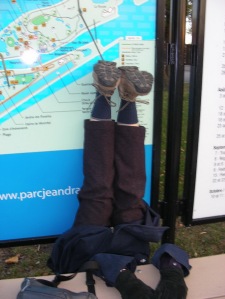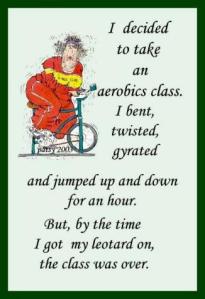Gentle Reader,
A friend sent me a TED talk by Dr.Terry Wahls on MS this past week. In the 5 minute screening she recounts her productive life as a research scientist up to the debilitating onset of MS. Seeking the best care medical professionals had to offer, her condition worsened. Driven by her inquiring mind to know as much as she could about her disease, she began to experiment with different foods and supplements. As her condition improved, she increased her dependence on whole plant foods, greens, reds, yellows, blues, purples and lessened or stopped eating altogether all refined foods, meats, dairy, sugars, grains. Exercise became possible. Brain function and mobility returned to better than normal. All drug intake stopped. Take a minute to watch. http://www.youtube.com/watch?v=KLjgBLwH3Wc
Arthritis caused by spinal stenosis and osteoarthritis is not Multiple Sclerosis. I realize this. I would challenge anyone suffering from the pain and loss of mobility caused by arthritis to eat the diet Dr. Wahls describes and discover how much this pain lessens and mobility increases. Every other system in the body improves with this diet.
Now, most people will not be able to eat this way day in and day out. I don’t. For instance, yesterday I ate 1 meal on the run, getting off for choir practice with a protein shake in my car. The next two meals I ate in the company of church members, lunch with a homeless community meal; dinner with the group of people I traveled with to Nicaragua in February. My defense is supplementation. The Carotanoids, Flavonoids, the Liver Cleanse, the pre and pro biotic do their best to take the place of the diet Dr. Wahls recommends. When I am home, like today, I will eat this way.
You may have decided this blog is becoming too much of a harangue about diet and lose interest in following my Monday posts. Before you go, just think outside the box, if you will, and consider the value to your health of a diet of fresh fruits and vegetables, natural oils and proteins from plant sources. Think of the future you dream of with your children and grandchildren, of travel and gardening, of skiing and hiking, of knitting and sewing without pain well into your 80’s and even your 90’s. What is the price you are willing to pay for a pain free future? We pay for our health sooner or later. A wholesome diet and supplementation put the money up front and could lessen the cost of healthcare in our later years. Think about it.
I am too harsh and unforgiving. I love you just the way you are and would gladly listen to your stories about ways you have found to alleviate your arthritis pain. If you do experiment with the Dr. Wahls diet, let me know how it goes. If you want to fill in the gaps with “foodlet” supplements that are guaranteed to make you feel better or your money back, let me know that, too.
Be well, Do Well and Keep Moving.
Betsy
BetsyBell’s Health4U
206 933-1889
Seattle, WA 98116
I






